The Twig Catfish, a fascinating creature that has captured the hearts of many aquarium enthusiasts. Its scientific name, Farlowella acus, may seem like a mouthful, but it’s actually quite interesting. The genus Farlowella is named after W. G. Farlow, a Harvard University professor, while the species name “acus” means “needle” in Latin, referring to the fish’s long, slender body.
Table of Contents
But what makes this fish so unique? For starters, its elongated body and pointed snout make it a standout among other catfish. It’s also a relatively small species, reaching a maximum length of about 6.3 inches (16 cm). Despite its size, the Twig Catfish is a peaceful and sociable creature that thrives in community tanks with other calm fish.
In the wild, Farlowella acus can be found in the Lake Valencia and Torito River basins in Venezuela, where it inhabits clear, oxygen-rich waters with a pH range of 6.8-7.6 and temperatures between 73-79°F (23-26°C). As a bottom-dweller, it spends most of its time near the substrate, feeding on algae, detritus, and small invertebrates.
One of the most interesting things about the Twig Catfish is its ability to blend in with its surroundings. Its mottled brown and yellow coloration allows it to camouflage itself among plants and driftwood, making it a great choice for aquariums with plenty of hiding places.
But don’t just take my word for it – research has shown that Farlowella acus is a unique and fascinating species. A study published in the journal “PlanetCatfish” notes that the Twig Catfish is “a reophilic fish that rarely leaves the substrate” and is best kept in tanks with fine sand and rounded stones.
As for tankmates, the Twig Catfish gets along well with other peaceful fish like Otocinclus, Parotocinclus, and other Farlowella species. However, it’s best to avoid keeping it with aggressive or fin-nipping fish, as it can be easily stressed.
Some fun facts about the Twig Catfish include its ability to live up to 10 years in captivity and its unique breeding habits. Males develop long breeding odontodes along their snouts, which they use to attract females.
In conclusion, the Twig Catfish is a fascinating and unique species that makes a great addition to any community aquarium. With its peaceful nature, interesting appearance, and relatively low maintenance care, it’s no wonder why this fish has become a favorite among aquarium enthusiasts.
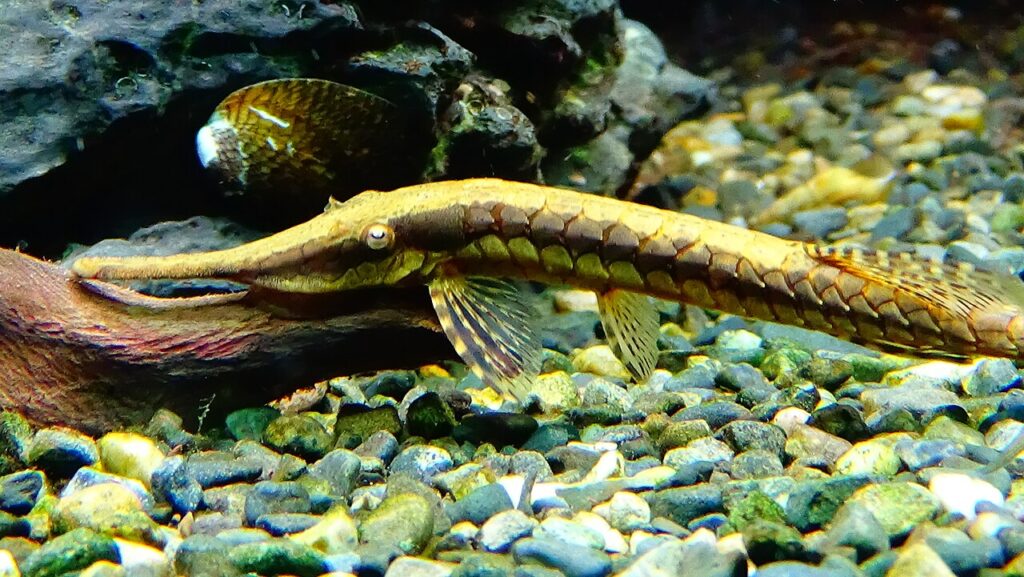
Twig Catfish Key Information
The Twig Catfish is a master of disguise, with its mottled brown and yellow coloration allowing it to blend seamlessly into its surroundings. Its elongated body and pointed snout are covered in a intricate pattern of darker and lighter shades, giving it a unique and fascinating appearance. As it moves through the water, the light catches its scales, revealing a subtle sheen that adds to its natural beauty.
| Family | Loricariidae |
| Origin | Lake Valencia and Torito River basins in Venezuela |
| Price | $10-$20 |
| Common Names | Twig Catfish, Farlowella Catfish |
| Variants | None |
| Ideal Tank Size | 20-30 gallons |
| Water Parameters | pH 6.8-7.6, temperature 73-79°F (23-26°C) |
| Lifespan | 8-10 years |
| Full Size | 6.3 inches (16 cm) |
| Natural Environment | Clear, oxygen-rich waters with rocky substrates |
| Behavior | Peaceful, nocturnal, and solitary |
| Habitat Preference | Rocky crevices and caves |
| Aquarium Decoration | Driftwood, rocks, and plants |
| Ideal Tank Mates | Otocinclus, Parotocinclus, and other peaceful catfish |
| Fish to Avoid | Aggressive or fin-nipping fish |
| Best Foods/Diet | Algae, detritus, and small invertebrates |
| Disease | Prone to fungal and bacterial infections |
| Sex-switch | No |
| Gender Differences | Males develop long breeding odontodes along their snouts |
| Care Level | Moderate |
| Breeding Level | Difficult |
Ideal Tank Mates for Twig Catfish
The Twig Catfish is a peaceful and fascinating species that can be kept with other calm and non-aggressive fish. When choosing tank mates for your Twig Catfish, it’s essential to select species that are compatible with its peaceful nature and specific water requirements.
Corydoras Catfish (Corydoras spp.)
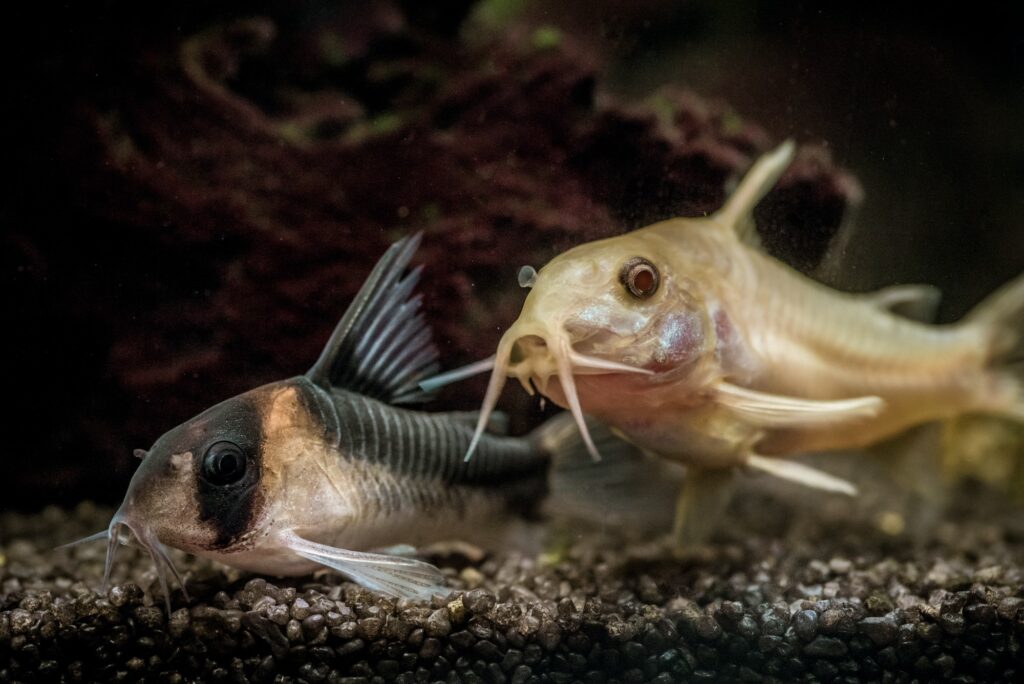
Corydoras catfish are a popular choice for community aquariums, and they make excellent tank mates for Twig Catfish. They are peaceful, small, and gentle, and they share similar water requirements. Corydoras catfish are also good for cleaning up food debris from the substrate, which can help to reduce the risk of disease in the tank.
| Common/Market Names | Price Range | Care Level | Behavior | Life Span | Max Size |
|---|---|---|---|---|---|
| Corydoras Catfish | $5-$10 | Easy | Peaceful | 5-7 years | 2-3 inches |
Dwarf Cichlids (Apistogramma agassizi)
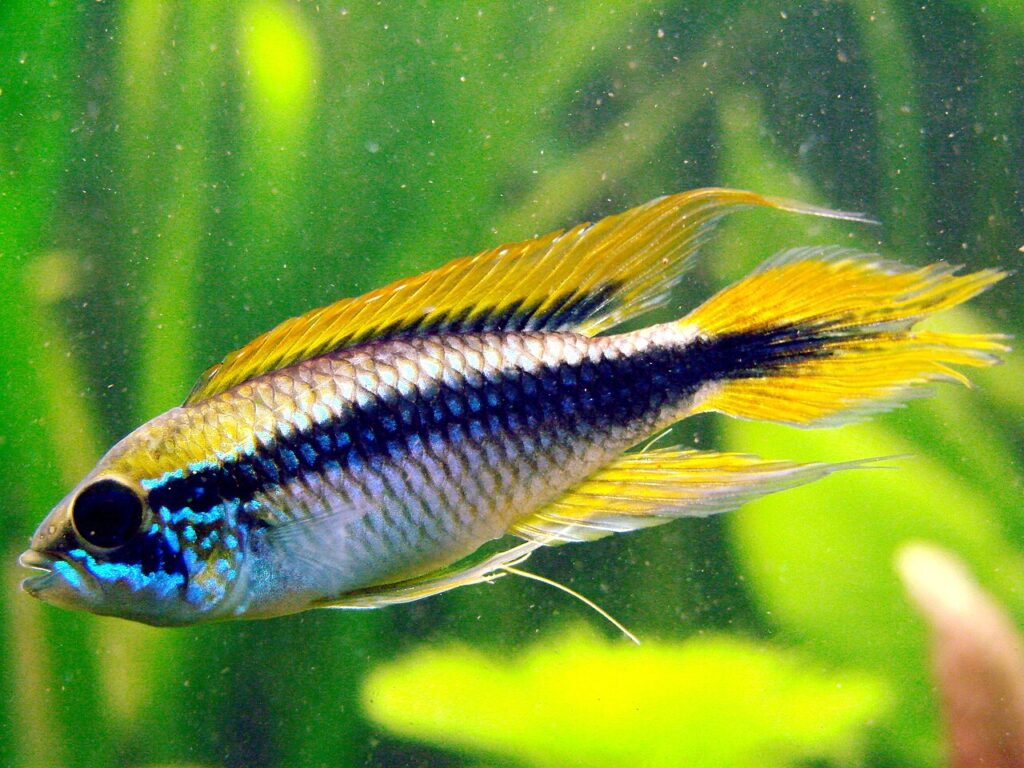
Dwarf cichlids are a great choice for tank mates for Twig Catfish. They are small, peaceful, and gentle, and they add a pop of color to the tank. Apistogramma agassizi is a popular species of dwarf cichlid that is compatible with Twig Catfish.
| Common/Market Names | Price Range | Care Level | Behavior | Life Span | Max Size |
|---|---|---|---|---|---|
| Dwarf Cichlids | $10-$20 | Moderate | Peaceful | 5-7 years | 2-3 inches |
Otocinclus Catfish (Otocinclus spp.)
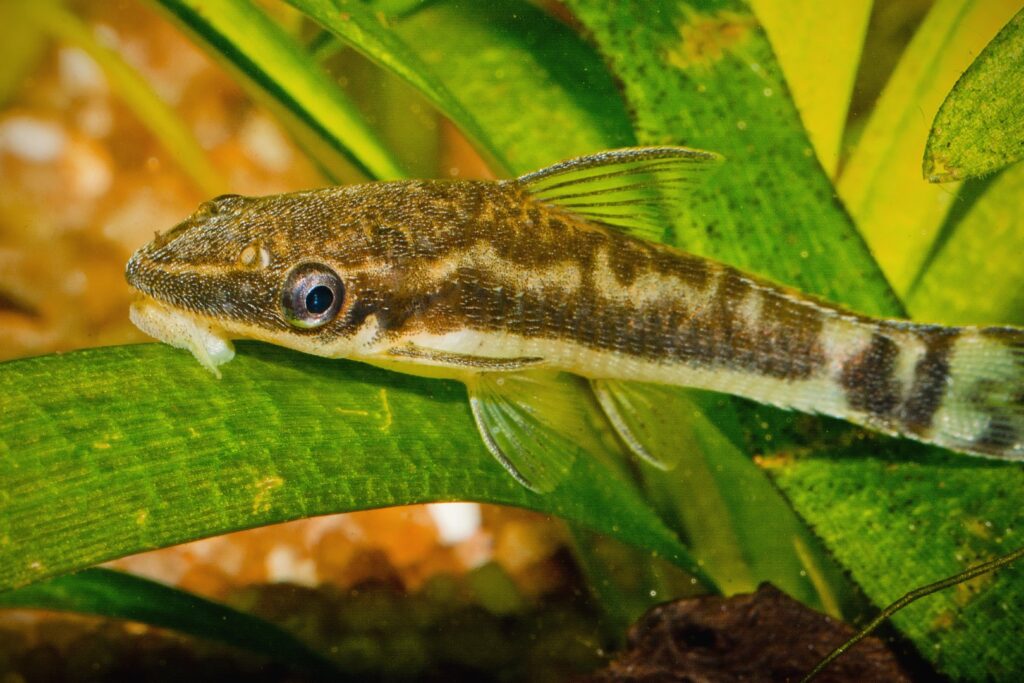
Otocinclus catfish are another peaceful species that can be kept with Twig Catfish. They are small, gentle, and easy to care for, and they are great for cleaning up algae from the tank.
| Common/Market Names | Price Range | Care Level | Behavior | Life Span | Max Size |
|---|---|---|---|---|---|
| Otocinclus Catfish | $5-$10 | Easy | Peaceful | 5-7 years | 2-3 inches |
Harlequin Rasboras (Trigonostigma heteromorpha)

Harlequin rasboras are a peaceful and active species that can be kept with Twig Catfish. They are easy to care for and add a lot of movement to the tank.
| Common/Market Names | Price Range | Care Level | Behavior | Life Span | Max Size |
|---|---|---|---|---|---|
| Harlequin Rasboras | $5-$10 | Easy | Peaceful | 5-7 years | 2-3 inches |
Zebra Danios (Danio rerio)
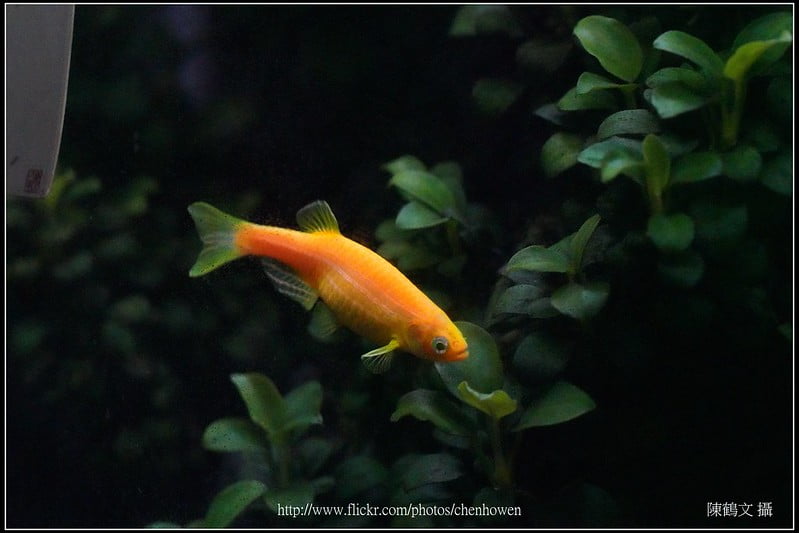
Zebra danios are a hardy and active species that can be kept with Twig Catfish. They are easy to care for and can tolerate a range of water conditions.
| Common/Market Names | Price Range | Care Level | Behavior | Life Span | Max Size |
|---|---|---|---|---|---|
| Zebra Danios | $5-$10 | Easy | Active | 5-7 years | 2-3 inches |
Cherry Shrimp (Neocaridina davidi)
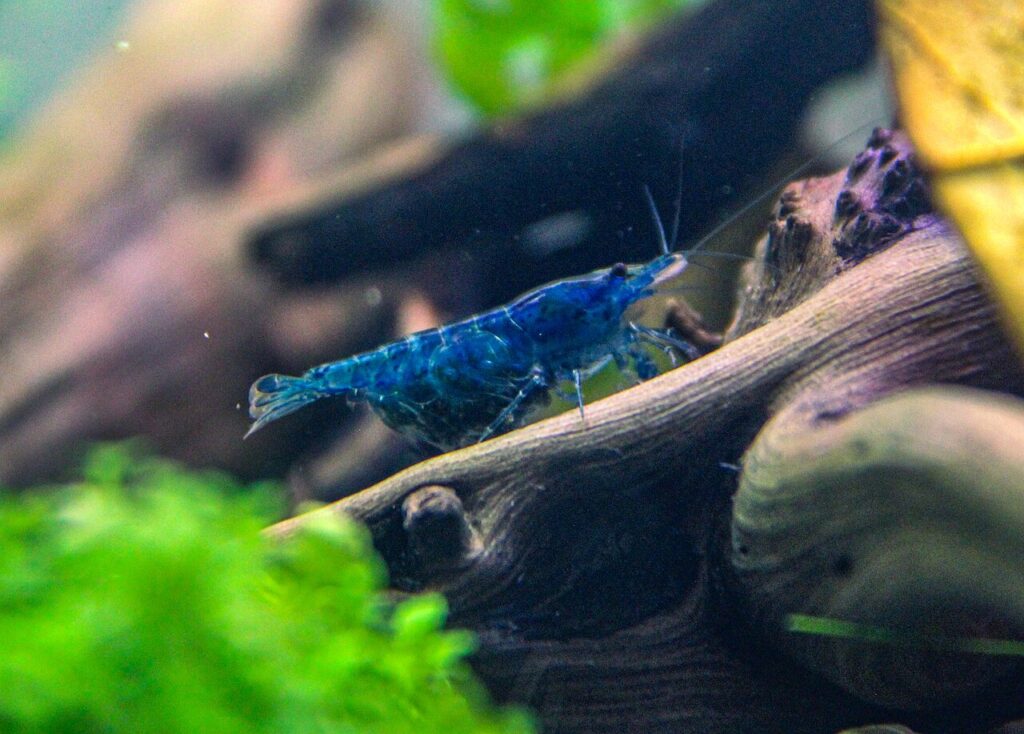
Cherry shrimp are a peaceful and colorful species that can be kept with Twig Catfish. They are easy to care for and can thrive in a well-planted tank.
| Common/Market Names | Price Range | Care Level | Behavior | Life Span | Max Size |
|---|---|---|---|---|---|
| Cherry Shrimp | $10-$20 | Easy | Peaceful | 2-3 years | 1-2 inches |
Amano Shrimp (Caridina multidentata)
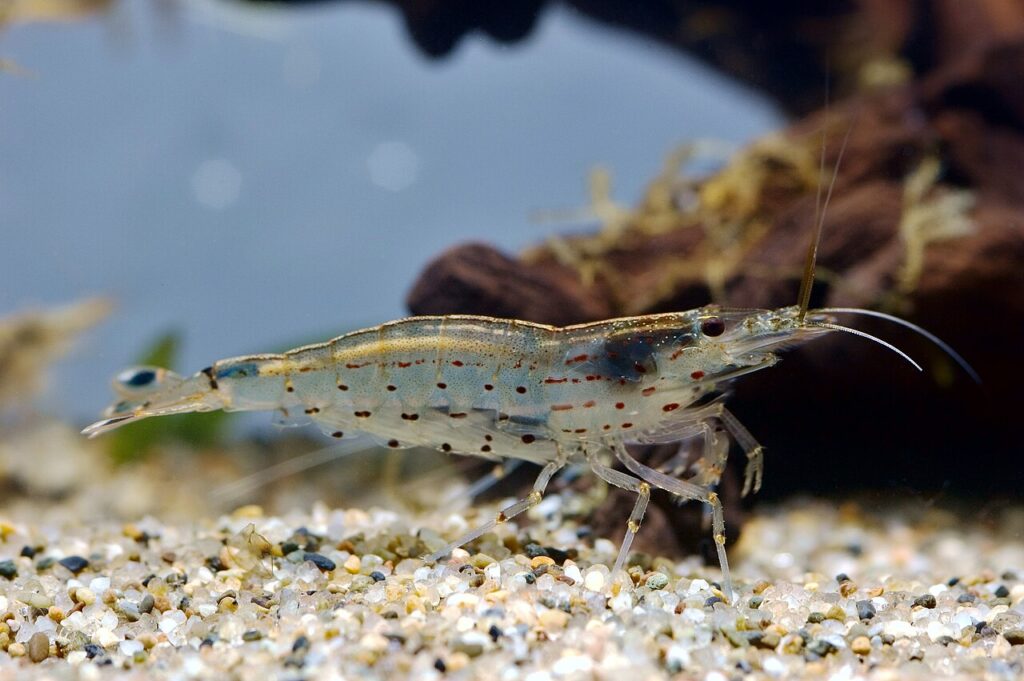
Amano shrimp are a peaceful and useful species that can be kept with Twig Catfish. They are great for cleaning up algae from the tank and are easy to care for.
| Common/Market Names | Price Range | Care Level | Behavior | Life Span | Max Size |
|---|---|---|---|---|---|
| Amano Shrimp | $10-$20 | Easy | Peaceful | 2-3 years | 1-2 inches |
Snails (Various species)
Snails are a great addition to a community tank and can be kept with Twig Catfish. They are peaceful, easy to care for, and can help to clean up food debris from the substrate.
| Common/Market Names | Price Range | Care Level | Behavior | Life Span | Max Size |
|---|---|---|---|---|---|
| Snails | $5-$10 | Easy | Peaceful | 2-5 years | 1-2 inches |
Bristlenose Plecos (Ancistrus dolichopterus)
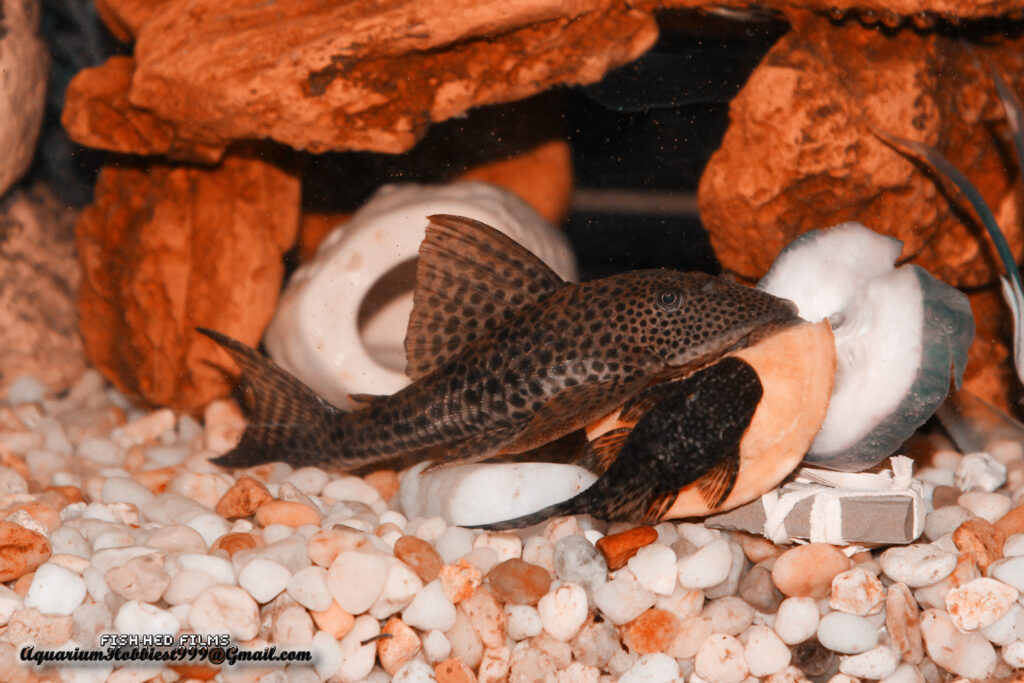
Bristlenose plecos are a peaceful and gentle species that can be kept with Twig Catfish. They are easy to care for and can thrive in a well-planted tank.
| Common/Market Names | Price Range | Care Level | Behavior | Life Span | Max Size |
|---|---|---|---|---|---|
| Bristlenose Plecos | $10-$20 | Easy | Peaceful | 5-7 years | 3-4 inches |
Parotocinclus Catfish (Parotocinclus spp.)
Parotocinclus catfish are a peaceful and small species that can be kept with Twig Catfish. They are easy to care for and can thrive in a well-planted tank.
| Common/Market Names | Price Range | Care Level | Behavior | Life Span | Max Size |
|---|---|---|---|---|---|
| Parotocinclus Catfish | $10-$20 | Easy | Peaceful | 5-7 years | 2-3 inches |
FAQs about Twig Catfish
How do I acclimate my Twig Catfish to a new tank?
When introducing your Twig Catfish to a new tank, it’s essential to acclimate it slowly to the new water conditions. Start by floating the unopened bag in the tank for 15-20 minutes to allow the water temperatures to equalize. Then, slowly release the fish into the tank, making sure not to net it or cause any unnecessary stress.
What is the best way to provide hiding places for my Twig Catfish?
Twig Catfish are naturally skittish and need plenty of hiding places to feel secure. You can provide hiding places by adding plants, rocks, and driftwood to the tank. Make sure to arrange the decorations in a way that creates plenty of crevices and caves for your Twig Catfish to hide in.
Can I keep Twig Catfish in a tank with a gravel substrate?
While it’s possible to keep Twig Catfish in a tank with a gravel substrate, it’s not the best choice. Twig Catfish are bottom-dwellers and prefer to dig and burrow in the substrate. Gravel can be too coarse and may cause injury to your Twig Catfish. A sand or fine-grained substrate is a better choice.
How often should I feed my Twig Catfish?
Twig Catfish are nocturnal and prefer to feed at night. You should feed your Twig Catfish 2-3 times a week, making sure to provide a varied diet that includes plenty of vegetable matter. Avoid overfeeding, as this can lead to digestive problems and poor water quality.
Can I breed Twig Catfish in a community tank?
Breeding Twig Catfish in a community tank is not recommended. Twig Catfish are sensitive to stress and may not breed successfully in a tank with other fish. Additionally, the eggs and fry may be eaten by other fish in the tank. If you want to breed Twig Catfish, it’s best to set up a separate breeding tank.
How do I recognize signs of stress in my Twig Catfish?
Twig Catfish can be sensitive to stress, and recognizing the signs of stress is crucial to keeping your fish healthy. Look for signs such as rapid breathing, erratic swimming, and a loss of appetite. If you notice any of these signs, check the water parameters and make any necessary adjustments to reduce stress.
Can I keep Twig Catfish in a tank with a pH lower than 6.8?
While Twig Catfish can tolerate a pH range of 6.8-7.6, they may not thrive in a tank with a pH lower than 6.8. A pH lower than 6.8 can cause stress and may lead to disease. If you want to keep Twig Catfish, it’s best to maintain a pH range of 6.8-7.6.
How do I treat fungal infections in my Twig Catfish?
Fungal infections can be a problem in Twig Catfish, especially in tanks with poor water quality. To treat fungal infections, you can use a fungal medication specifically designed for aquarium use. Make sure to follow the instructions carefully and take steps to improve the water quality in the tank.
Can I keep Twig Catfish in a tank with a water temperature higher than 79°F (26°C)?
While Twig Catfish can tolerate a water temperature range of 73-79°F (23-26°C), they may not thrive in a tank with a water temperature higher than 79°F (26°C). A water temperature higher than 79°F (26°C) can cause stress and may lead to disease. If you want to keep Twig Catfish, it’s best to maintain a water temperature range of 73-79°F (23-26°C).
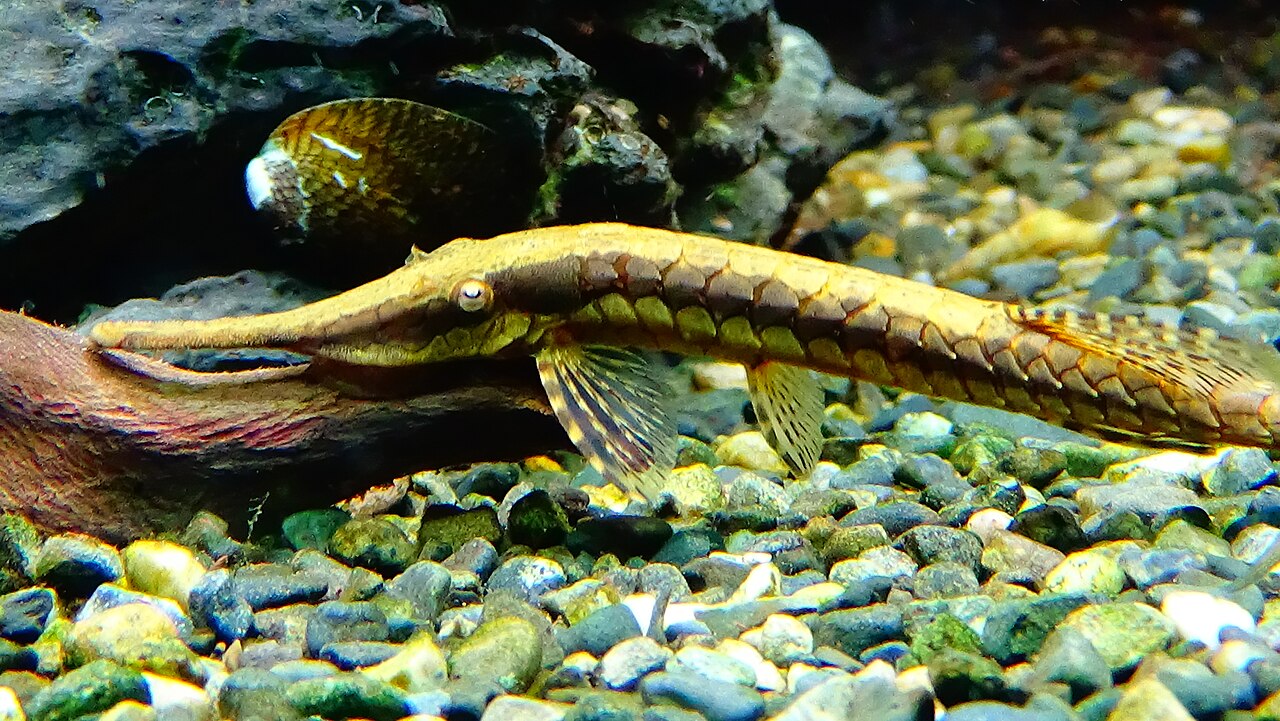
Leave a Reply